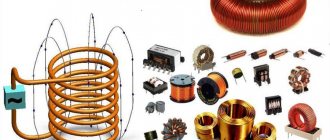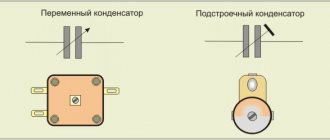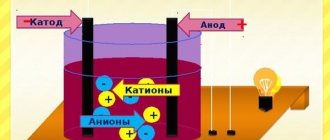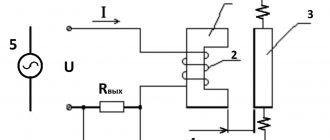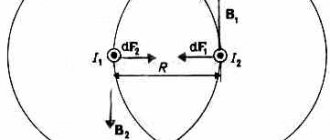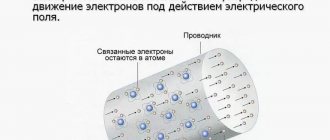There are forces in the world that people can only, it seems, come to terms with: time does not flow backwards, death is inevitable, gravity pulls down. They can only be defeated by a miracle - or magic. To make an object levitate, magicians from JK Rowling's world say "Wingardium Leviosa" and wave their wand. Muggle physicists have an answer to this - they know many ways to keep an object in the air without mechanical support.
To make an object levitate, you need to do two things. First, create a force directed vertically upward so that it does not fall under the influence of gravity. Secondly, care must be taken to ensure that an object suspended in the air is in stable equilibrium - that is, it independently returns to its original position after its rest is disturbed. In other words, in addition to the supporting force, we also need a returning one. Of course, the nature of both forces should not be mechanical - otherwise all levitation would be reduced to placing an object on a solid support or suspending it.
Magnes Fulcit
Simple permanent magnets are familiar to many from everyday life - you probably used them to hang an atlas on a school board or attach souvenirs from a resort to the refrigerator. The power of magnetism was well known in ancient times: for example, Pliny the Elder mentions in his writings the architect Timocharis, who was going to use a “magnetic stone” in the vault of the Alexandrian temple so that the iron statue under it would float in the air. Pliny, however, does not specify what was supposed to keep the statue from sticking to the ceiling.
But if you slightly expand the scope of everyday use and experiment with two magnets, you will find that their opposite poles attract, fastening the magnets to each other no worse than a separate magnet with a board, but connecting them with like poles is more difficult - they repel. This phenomenon can be used for levitation, creating a magnetic field in space that will push the desired object vertically upward.
However, if it is relatively easy to counteract the force of gravity with the help of magnetism, then creating a stable equilibrium is no longer so simple. Earnshaw's theorem prohibits static paramagnets and ferromagnets from generating stable levitation: no matter how hard a modern experimenter or an ancient architect tries, without additional conditions, turning two permanent magnets even at a very small angle will lead to the fact that they will turn towards each other with opposite poles, repulsion will turn into attraction , and the flight will stop.
Fortunately, there are several ways to get around this ban. One of them is to place a diamagnetic material in a magnetic field. It, unlike a paramagnet, is magnetized not along the external field, but opposite to it, and Earnshaw’s theorem does not prohibit it from hovering stably in the air. And with small deviations from the equilibrium position, the diamagnetic’s own field can be rearranged so as to return it to equilibrium. You can imagine such an effect by mentally replacing the magnetic field with a set of mechanical springs that are attached to the object: with small stretches and compressions relative to equilibrium, their elastic forces will themselves adjust so that the object returns to its original position.
It is not difficult to select a diamagnetic material: similar behavior is characteristic of many substances, including organic compounds, which means that living creatures can also levitate in sufficiently strong fields. There are known experiments when, with the induction of a field of tens of teslas, it was possible to send frogs and mice into flight - it is noted that the latter adapted to a suspended state in about four hours.
In a similar way, stable levitation can be achieved using superconductors - materials that, when strongly cooled, completely lose electrical resistance (more about the mechanisms that make such a transition possible in the material “Below the critical temperature”). Being in a superconducting state, the sample displaces (or almost displaces) the external magnetic field applied to it from its volume - that is, from the point of view of the observer, it behaves like an ideal diamagnetic material, which is not just slightly magnetized in the opposite direction to the field, but as if it becomes an opposite magnet the same strength.
Thanks to this, superconductors, compared to true diamagnets, require on average less strong fields for levitation. The price for this convenience, however, is to cool the material to temperatures close to absolute zero in order to bring it into a superconducting state (but physicists are working on this problem - last fall they managed to achieve superconductivity at room temperature, although at a pressure of almost three million atmospheres).
For levitation, you can also combine different effects - for example, “suspend” a small magnet in the field of a superconducting solenoid and stabilize its position using diamagnetic materials - for example, human fingers or a physics textbook.
Levitation of a magnet in the field of a superconducting solenoid of about 11 Tesla, stabilized by diamagnetic materials - human fingers
Mathieu Simon et al. / American Journal of Physics, 2001
Share
Levitation of the same magnet in the field of a superconducting solenoid of about 11 tesla, stabilized by one of the volumes of the Feynman Lectures on Physics, which explains the phenomenon of diamagnetism
Mathieu Simon et al. / American Journal of Physics, 2001
Share
Another way to create stable levitation is to use non-static magnetic fields, which does not apply to Earnshaw's theorem. For example, below is an invention from the eighties, a kind of magnetic spinning top: a stationary cup-shaped magnet supports with its field a spinning top-shaped magnet rotating above it. If the latter is spun quickly enough, then its levitation will be stable - by analogy with a regular top, with small deviations from the vertical, small transverse velocities of the points of the body will add up with large rotational speeds, and the top will continue to rotate steadily, although its axis will tremble a little.
The toy levitates in a magnetic field, remaining stable due to rotation
Wikimedia Commons
Share
Finally, you can stabilize levitation using feedback - that is, monitor where the object is and adjust the magnitude of the magnetic field so that it constantly keeps the body trying to “slide” from it. The main thing in this matter is to be on time. If the magnetic field is late for its work, it will no longer return balance to the levitating object, but, on the contrary, will destabilize it even more.
Despite the difficulties, this method of levitation has a very wide practical application - for example, it is used by magnetic levitation trains - maglevs (an abbreviation for magnetic levitation). The principle of operation of such transport is based on the fact that the magnetic rail adapts to the displacements of the train levitating above it, quickly changing its polarity so as to speed up (or slow down) the movement - just as with the help of permanent magnets we can briefly accelerate one of them, “ luring" him with the opposite pole of the other.
Experimental carriage "TP-05" of the prototype Soviet maglev, which was tested in the seventies and eighties of the last century. The project was later frozen
Wikimedia Commons
Share
Maglevs do not touch the rail, but levitate above it, and therefore are the highest speed type of public transport - they are slowed down only by air resistance. In 2015, a Japanese maglev set a record speed of over 600 kilometers per hour during testing, and the projected maglevs in vacuum tunnels will likely move an order of magnitude faster, covering up to six thousand kilometers in an hour.
In the summer of 2021, the German company ThyssenKrupp demonstrated the MULTI elevator, which works on the same principle as maglevs - that is, it levitates.
Magnetic lift
thyssenkrupp/YouTube
Share
Such an elevator is capable of moving not only vertically, but also horizontally - which means it is possible to develop non-linear shafts in which the cabins overtake each other and move between different parts of the building, increasing the throughput of the system. And a year before the experimental demonstration, a Canadian engineer, inspired by the MULTI concept, proposed using such cabins as mobile rooms that can slide along the walls of a building, hovering at the desired windows and creating additional space.
Diamagnets
Diamagnets are classified as weakly magnetic substances. In the absence of a magnetic field, they are not magnetized. In such substances, when they are introduced into an external magnetic field, the movement of electrons in molecules and atoms changes so that an oriented circular current is formed. The current is characterized by a magnetic moment ($p_m$):
where $S$ is the area of the coil with current.
The magnetic induction created by this circular current, additional to the external field, is directed against the external field. The value of the additional field can be found as:
Any substance has diamagnetism.
The magnetic permeability of diamagnetic materials differs very slightly from unity. For solids and liquids, the diamagnetic susceptibility is of the order of approximately ${10}^{-5},\ $for gases it is significantly less. The magnetic susceptibility of diamagnetic materials does not depend on temperature, which was discovered experimentally by P. Curie.
Finished works on a similar topic
Coursework Classification of Magnetics: Diamagnetics, Paramagnetics and Ferromagnetics 450 ₽ Abstract classification of magnetics: diamagnetics, paramagnetics and
ferromagnetics
Diamagnets are divided into “classical”, “anomalous” and superconductors. Classical diamagnetic materials have a magnetic susceptibility $\varkappa
In weak magnetic fields, the magnetization of diamagnetic materials is proportional to the magnetic field strength ($\overrightarrow{H}$):
where $\varkappa$ is the magnetic susceptibility of the medium (magnet). Figure 1 shows the dependence of the magnetization of a “classical” diamagnetic on the magnetic field strength in weak fields.
Fig.1
Lux Pressura
Another way to create levitation is to use light pressure. The hypothesis about this phenomenon was put forward by Johannes Kepler four centuries ago as an explanation for the fact that the observed tails of comets are directed away from the Sun. In the second half of the 19th century, the pressure of light was substantiated within the framework of Maxwell’s classical electrodynamics, and a few years later the theoretical prediction was confirmed in the experiments of Peter Lebedev.
Modern ideas about electromagnetic radiation are somewhat broader than in Maxwell’s theory - it is now generally accepted that it has not only wave, but also corpuscular properties. A light beam can be thought of as a beam of elementary particles - photons - each of which carries a portion of energy and has momentum, which means, by analogy with mechanical particles (for example, small pellets), can transfer this impulse to other bodies when interacting. If you create a device that allows you to properly manage this impulse, then you can push an object with a stream of radiation in the desired direction.
In 1986, American physicist Arthur Ashkin and his colleagues demonstrated the operation of one of these devices - optical tweezers. If you try to work with objects of the microcosm using ordinary tweezers - cells, proteins, molecules (and even smaller particles), then such an experiment is unlikely to end in success - a mechanical instrument is too rough for this and will only destroy the system under study. Ashkin figured out to replace the mechanical levers with an intense laser beam, which, using light pressure, holds microscopic particles without affecting their internal structure.
To ensure levitation of an object in such tweezers, the laser beam is focused through the microscope lens. As a result, the beam develops a “waist”—a narrowing in which the intensity (the number of photons flying through a unit cross section per unit time) increases sharply from the edges of the beam to its center. Because of this, a microparticle placed in a beam is subject to a gradient force from the side of radiation, which pulls it into the center of the beam - the region of greatest intensity (despite the fact that every particle tends to get into the center, a detailed description of this process depends on the relation between the particle size and the laser wavelength - you can find out more about this in the material “Scalpel and tweezers”)
.
Scheme of operation of optical tweezers: when displaced relative to the center of the beam, the particle experiences a restoring force, while the central position is stable
Wikimedia Commons
Share
An object sandwiched in a beam of light moves slightly in the direction from the source of the laser beam, as incident photons transfer their momentum to it - as a result, the microparticle is fixed in a very compact central region, which is very convenient for precise measurements in biology, physics and medicine. Thus, using an optical trap in 2021, Australian physicists measured the force acting on an individual atom with an accuracy of hundredths of an attonewton - this is tens of billions of trillions (that is, 10²²) times less than the typical force of gravity that acts on a person.
Not long before this, American scientists learned to create three-dimensional color holograms by illuminating a small particle that was moved with optical tweezers at a speed of almost two meters per second. Thanks to the inertia of human vision, the light trail merged into a single color image.
Examples of images created by moving a particle with optical tweezers (camera shutter speed 8–56 seconds)
D. Smalley et al. / Nature, 2018
Share
A year later, physicists in Sweden and Germany observed micrometer-sized glycerol droplets in a laser beam, hoping to track their movement and describe in detail the merging of particles. However, instead, they unexpectedly discovered that during tangential collisions, levitating drops do not merge, but acquire stable closed trajectories of irregular shape, like balls in the hands of an invisible juggler. At a qualitative level, the authors explained this by the fact that levitating drops periodically obscure the laser beam from each other, and therefore the gradient force and radiation pressure periodically change, causing the particles to either descend and fly away from the center of the beam, then fly up to it again and gain height.
Left: observed motion of glycerol droplets in an optical trap; right: numerical model
Albert Bae et al. / Physical Review Letters, 2019
Share
In addition, theoretical estimates show that it is fundamentally possible to hold macroscopic objects - for example, small thin mirrors weighing a fraction of a milligram - by radiation pressure forces. Perhaps in the foreseeable future, optical tweezers will no longer just become tools for working in the microcosm, but will also replace mechanical ones in macroscopic experiments.
Calor Fuga
Light not only puts pressure on objects, but also heats them - thanks to this, levitation can also be achieved. The fact is that when one side of a body in the air is heated more than the other, the gas molecules bounce off it on average faster - this is how photophoretic force arises.
In this case, the hotter side is not necessarily the one on which the light falls. Thus, in 2004, scientists at Osaka University observed negative photophoresis - the migration of microscopic droplets in a laser beam to the radiation source. Of course, such behavior would not be able to provide radiation pressure - after all, the photons in the laser beam fly from the source, and therefore only push the drop away from it.
It's not just a difference in temperature that can cause molecules to bounce off one surface of a body faster than another. In mid-February, American physicists demonstrated how disks with a diameter of half a centimeter levitated in a vacuum chamber at a pressure of ten thousandths of atmospheric pressure, although the difference in the temperature of their surfaces was negligible.
A polymer disk weighing 0.3 micronewtons levitates at a pressure of 30 pascals and radiation intensity on the order of solar
Mohsen Azadi et al. / Science Advances, 2021
Share
This was achieved thanks to the structure of the disks: on the bottom they were covered with a layer of carbon tubes with nanometer inhomogeneities, and on top with a smooth polymer material. As a result, despite the almost identical temperatures of the upper and lower layers, the molecules still bounced off them differently - this was enough to overcome gravity with the help of LEDs and make the disks levitate.
Thus, the authors showed the possibility of levitation under the influence of sunlight in the mesosphere, the upper layer of the Earth’s air envelope. It is already too sparse for airplanes and balloons, but still too dense for space satellites. Perhaps now the path to the mesosphere will be open for such compact devices - they will be able, for example, to collect atmospheric data for meteorologists and climatologists.
Vox Suspend
Another type of levitation is acoustic. When coherent acoustic waves (with a constant phase difference over time) are superimposed on each other, a standing wave can form - a state of oscillation in which the regions of minimum and maximum amplitude do not move, and the wave seems to freeze in space. This creates static areas of high and low pressure - this can be used for levitation by placing an object in the area of minimum pressure that is no larger than the wavelength. The increased pressure around will keep it from falling and stabilize relatively small displacements to the sides.
Small balls levitate at the nodes of a vertical standing acoustic wave
Wikimedia Commons
Share
If you smoothly change the phase and amplitude of sound waves, you can change the location and “depth” of acoustic “holes” - and thus make objects not just hang in the air, but move in space. So, in January of this year, Japanese engineers showed a device in which a balloon controlled by ultrasonic emitters became an input-output interface.
The balloon rotates under the influence of ultrasonic waves emitted by the emitters surrounding it
ShinodaLab/YouTube
Share
Experimenters now continue to struggle with the technical limitations of acoustic levitation - in the fall of 2021, British engineers taught their device to go around obstacles by placing a structured plate in front of the emitters with cavity sizes on the order of the wavelength. Because of this, the phase of each wave changes so that when they are added to each other, the resulting sound field bends around the area near the emitters.
And shortly before this, other British researchers made an object larger than the wavelength levitate - for this they placed 192 ultrasonic transducers on the surface of a spherical sector and, with their help, instead of a regular standing wave, created a set of sound vortices in the air with the opposite direction. This sound field configuration was able to hold a polystyrene ball with a diameter of 1.6 centimeters—almost twice the wavelength.
Levitation of a ball with a diameter almost 20 percent greater than the wavelength in an acoustic vortex
UpnaLab/YouTube
Share
Finally, third British engineers in the spring of 2021 organized the control of levitation by hand movements: information about its position was read by an infrared sensor and transmitted to ultrasonic arrays of emitters. In response, the latter regulated the emitted waves and moved the flying ball following the direction indicated by the finger. For the demonstration, the researchers presented a prototype slot machine that required the player to move a ball through rings.
The motion sensor transmits information about hand movements to an array of ultrasonic emitters that guide the ball following finger movements
Rafael Morales Gonzalez et al. /CHI EA 2020
Share
If desired, the simplest (and relatively cheap) acoustic levitator can be assembled at home - the corresponding instructions were published by scientists at the University of Bristol in 2021. They suggested using ultrasonic parking sensors for cars and an Arduino Nano microcontroller as parts for assembly.
Paramagnets
Paramagnetic substances are also classified as weakly magnetic substances. Paramagnetic molecules have a permanent magnetic moment ($\overrightarrow{p_m}$). The energy of the magnetic moment in an external magnetic field is calculated by the formula:
The minimum energy value is achieved when the direction of $\overrightarrow{p_m}$ coincides with $\overrightarrow{B}$. When a paramagnetic substance is introduced into an external magnetic field in accordance with the Boltzmann distribution, a preferential orientation of the magnetic moments of its molecules appears in the direction of the field. Magnetization of the substance appears. The induction of the additional field coincides with the external field and accordingly enhances it. The angle between the direction $\overrightarrow{p_m}$ and $\overrightarrow{B}$ does not change. The reorientation of magnetic moments in accordance with the Boltzmann distribution occurs due to collisions and interactions of atoms with each other. Paramagnetic susceptibility ($\varkappa $) depends on temperature according to Curie’s law:
Do you need proofreading or review of academic work? Ask a question to the teacher and get an answer in 15 minutes! Ask a Question
or the Curie-Weiss law:
where C and C' are the Curie constants, $\triangle $ is a constant that can be greater or less than zero.
The magnetic susceptibility ($\varkappa $) of a paramagnetic is greater than zero, but, like that of a diamagnetic, it is very small.
Paramagnets are divided into normal paramagnets, paramagnetic metals, and antiferromagnets.
For paramagnetic metals, magnetic susceptibility does not depend on temperature. These metals are weakly magnetic $\varkappa \approx {10}^{-6}.$
In paramagnetic materials there is a phenomenon called paramagnetic resonance. Let us assume that in a paramagnetic material that is in an external magnetic field, an additional periodic magnetic field is created, the induction vector of this field is perpendicular to the induction vector of a constant field. As a result of the interaction of the magnetic moment of an atom with an additional field, a moment of force ($\overrightarrow{M}$) is created, which tends to change the angle between $\overrightarrow{p_m}$ and $\overrightarrow{B}.$ If the frequency of the alternating magnetic field and the frequency the precession of the atomic motion coincides, then the torque created by the alternating magnetic field either constantly increases the angle between $\overrightarrow{p_m}$ and $\overrightarrow{B}$, or decreases. This phenomenon is called paramagnetic resonance.
In weak magnetic fields, magnetization in paramagnetic materials is proportional to the field strength and is expressed by formula (3) (Fig. 2).
Rice. 2

